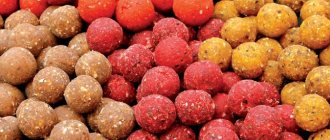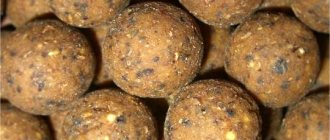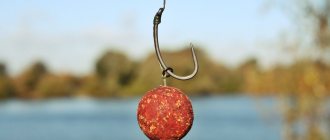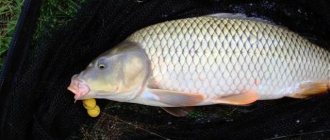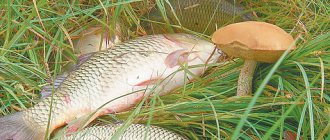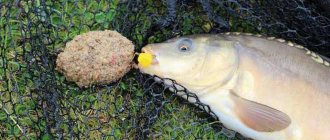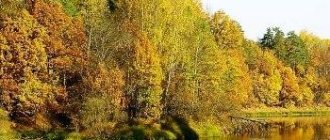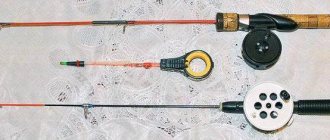Boilies are bait for catching fish in the form of small balls of various colors made from dough. The peculiarity of boilies for fishing is that steaming is used during the preparation process. Aromatics and eggs are also added to the dough. Thanks to this, the bait acquires a special structure. But the most important secret of using boilies is that when biting, careful fish do not come into contact with the hook.
The dough balls can have different sizes. When fishing for roach, small boilies with a diameter of up to 8 mm are used. Catfish are caught using large boilies, the size of which reaches 3 cm. Such boilies spread a thick aroma of meat and attract predators.
The composition most often includes flour or cereals of various cereals, protein additives (protein, fish flour, meat), binding ingredients (gelatin, egg, milk, etc.). Flavors and dyes are also added to boilies. In the case of self-production, it is important to maintain exact proportions, as well as give the balls a round shape and the same size.
This bait is not susceptible to the influence of small fish, since there is a strong crust on the surface of the ball. The bait lies on the bottom and waits until a larger specimen approaches it.
Selection of nozzles depending on the season
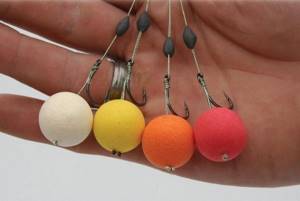
in spring
It is best to use boilies that contain fishmeal, or granules with the taste of cuttlefish, shellfish, squid or crab.
In summer
The water temperature rises and fishermen switch to fruity aromas. Lures with combined flavors, such as strawberry fish or cherry fish, also work well. It also bites well on chocolate-flavored baits.
in autumn
the fish tries to gain weight, and flavors such as crayfish or snail are used. The fish also bite on banana-flavored bait.
During the cold season
Various exotic flavors go well, for example kiwi-crayfish.
What kind of fish can you catch with boilies?
Most often, you can catch carp or carp using boilies. But this type of bait is also used when catching crucian carp, roach, silver carp, asp, grass carp, bream, ide and other white fish.
Types of boilies
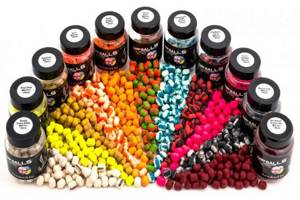
There are three main types of boilies for fishing:
- pop-up (for muddy or overgrown bottom);
- sinking (for a clean bottom);
- neutral (suspenders).
Boilies with a large addition of flour are called dusty boilies. When dissolved, a cloud of dust particles is formed around them, attractive to fish. Similar boilies are used for bait.
How to attach boilies
Properly attaching boilies is essential knowledge for successful fishing. Previously, fishermen simply put it on a hook like regular bait. But at this time, several methods of correct installation are available. The most common is hair rigging. When using such equipment, the boilie is not attached to the hook, but to the fishing line, which is located nearby. This method allows the fish to taste the bait and then swallow it along with the hook.
The most effective types:
- Knotless installation. To do this, use a leash on which the boilie is attached; it is attached in close proximity to the hook. This option is suitable for beginners.
- Rigid equipment. It is used mainly on braided fishing lines, where a loop is tied directly on the hook, onto which the boilie is attached. This equipment reduces the risk of fish getting lost, since the fish sucks in the boilie immediately with the hook.
Equipment for boilies
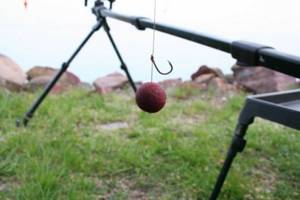
For fishing with boilies, use a medium or heavy feeder form with a dough of 60 to 100 g; it is important to choose the most reliable feeders. When choosing a reel, you should give preference to a match reel, but a regular spinning reel is also suitable.
For the main line, you should choose regular braid. The thickness of the fishing line is 4 mm. Thin fishing line often cannot withstand casting heavy loads. Excessive thickness of the “sail” in strong side winds.
For leashes, you can use monofilament fishing line. The likelihood of self-cutting in such cases increases. But most often they use braid with a diameter of 0.12 to 0.14 mm with a breaking capacity of more than 10 kg.
When choosing a material, you should give preference to colors that do not stand out lying on the bottom. The hook remains free.
When choosing hooks, you should give preference to products made of thick, dark-colored wire. You can use hooks number 6, 7 or 8. The tip should be bent inward.
To ensure successful self-hooking of carp, round sinkers weighing from 80 to 100 g are used.
How to put boilies on a hook
There are two main types of mounting a boilie on a hook:
- hair accessories (braided);
- helicopter (helicopter rig).
Hair rig
is the basic installation for boilies. When we knit a leash, we make a loop at the end, which we thread through the boilie using a needle with a hook and stop it with a special stopper. Below is shown how to tie a fisherman's knot for a hair rig and the hair rig itself with a boilie. To ensure a secure connection, heat shrink is added over the cord fastening to the hook.
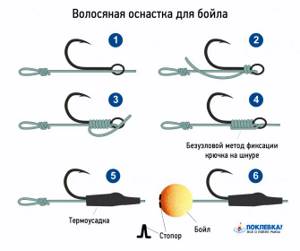
Boilie rig helicopter
- This is the longest-range of all equipment. When properly manufactured, it allows you to catch fish very effectively over long distances.
During the flight, the first link is the sinker - this is a very important point of this equipment. Therefore, the sinker is often made of an aerodynamic shape, which will undoubtedly contribute to a longer throw and eliminate parasitic vibrations during flight. Fox long cast and “bullet” format weights are used.

TOP 3 carp rigs you should try
We present to your attention three different rigs that are used in situations for catching large, cautious fish on pressed reservoirs, for fishing with PVA bags on commercial ponds, as well as rigs for fishing over silt. These are carp rigs that you should definitely try!
Equipment for catching large cautious fish
The standard leash length is 20-25cm, as is often the case when catching trophy fish, hooks are used No. 4, and large sinking 20mm boilies with a 16mm pop-up of the same name are placed in the nozzle. In general, a classic snowman, but not a blowback rig, and everything will be done a little differently.
It is used by Gaz Farheim, a famous carp angler who specializes in spot carp fishing with big trophies. It is better to use a semi-rigid driving material with a decent breaking load. Gas puts 35lb.
Step No. 1 - remove about 15cm of braid from the leader material

Step #2 - Place two of your boilies on the needle. For the first time, it is better to make a leash with boilies, and then measure the length of the hair using a hair meter and then just make blanks.
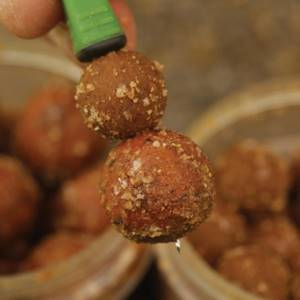
Step No. 3 - As usual, fix the nozzle with a boilie stopper.
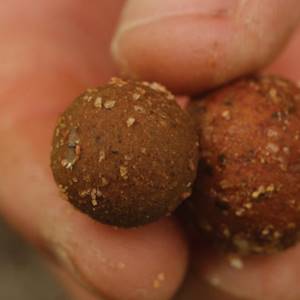
Step #4 - Cut a small piece of silicone tube for hooks and put it on the leader material.
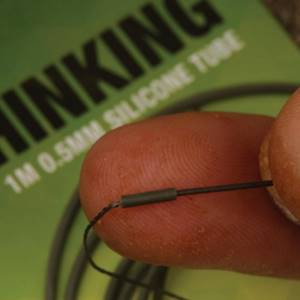
Step #5 - Carefully insert the tip of the hook into the tube, as shown in the photo. Pay attention to where the part from which the braid was removed is located!
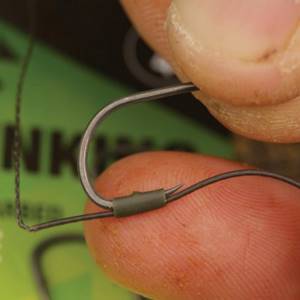
Step #6 - Knit a knotless knot.
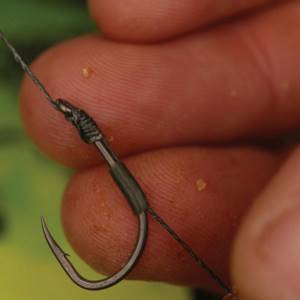
Step No. 7 - The main nuance. Take the entire medium-sized heat-shrinkable tube from the package and place it on the eye of the hook. Then, steam it as usual.
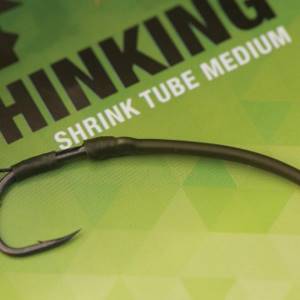
Step No. 8 - At the place where the border of the removed braid begins, hang a piece of soft lead.
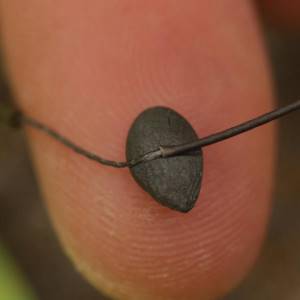
Step #9 - In reality, the rig will behave underwater something like this. Please note that this is a classic equipment with fairly long hair, using a silicone tube. Long hair ensures free movement of the bait in the water, and will also fall behind the lip when biting. The long lazybone creates additional emphasis for turning the hook. This rig is for the really big guys!
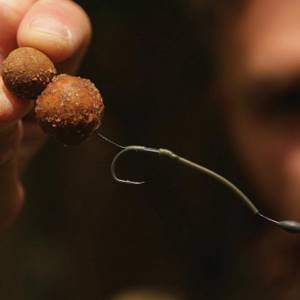
Equipment for fishing with PVA bags
As a rule, when fishing with PVA bags, short leashes are used. They gather more compactly when filling the bag. And in general, you don’t need a long leash, because the whole point of this type of fishing is that your bait is located on top of a tasty little pile of bait. So all you need is very little to create a successful commercial carp fishing line! Typically, this equipment is used precisely in such places.

It is worth noting that sometimes truly gigantic fish bite on such short leashes. For example, Mark Bartlett, who told us about this leash, caught carp of about 20 kg with this installation.
Step No. 1 - Cut off about 18cm of soft leader material in the braid. And remove the shell about 8cm from it.
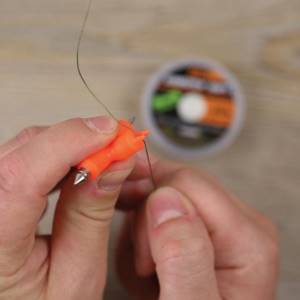
Step #2 - Similar to the previous leash, cut a small piece of silicone tube for small hooks.
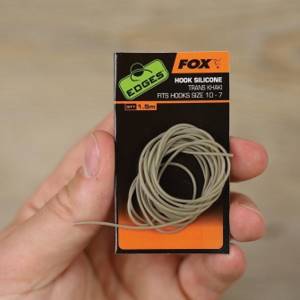
Step #3 - You will need a wide gap hook with a curved point.
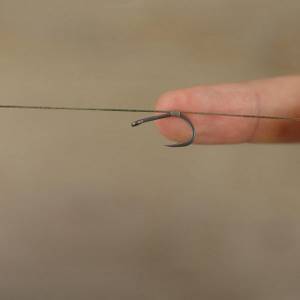
Step No. 4 - We attach a pop-up (we will explain why below), measure the length of the hair, knit a knotless knot and you get something like this:
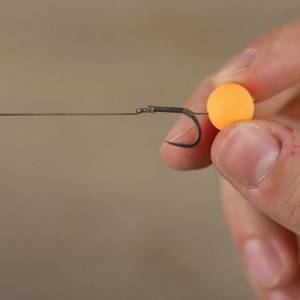
Step #5 - Add a small heat shrink tube.
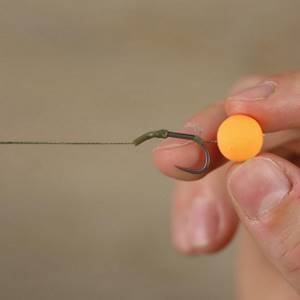
Step No. 6 - Again we put soft lead at the border of the braids!
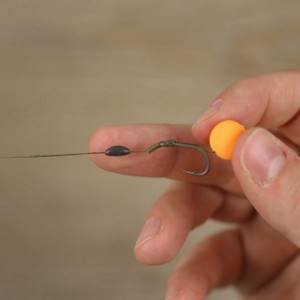
Step #8 - final presentation. Why pop-up? The thing is that when your PVA bag dissolves, the stick mix will crumble a little and your floating boilie will burst out. From above, namely for the fish, your presentation will be presented as an exclusively accumulation of delicious food, on top of which is the cherry on the cake - a bright, attractive pop-up.
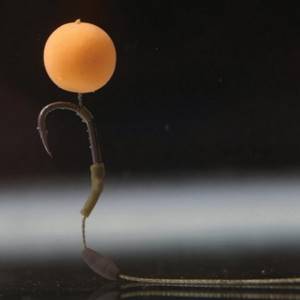
Equipment for fishing above silt
This installation will allow you to raise the floating boilie a little higher, while it will be equipped with a rigid section that will provoke the fish to jerk (which will lead to a hook), while it will have a large stroke and will not hinder the movement of the pop-up during the first bites fish.
Step #1 - First, you should take a ready-made short chod rig.
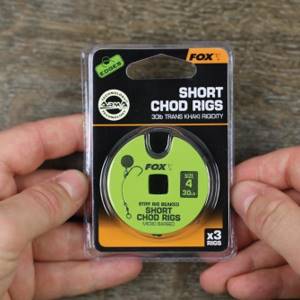
Step #2 - This is what they look like (in the sense of ready-made leashes)
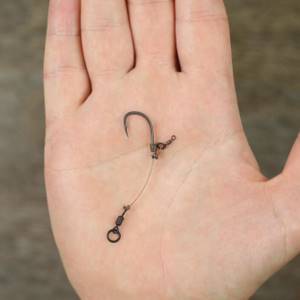
Step No. 3 - We also take semi-rigid material, as in the first equipment.
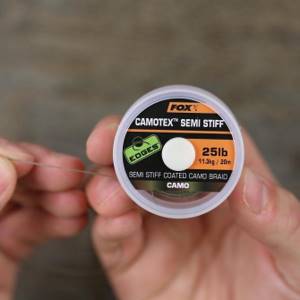
Step #4 - Now you need to knit a special loop that will provide a hinge for your rigid section. Look carefully at the photo below and you will easily figure out how to knit it.
Step #5 - We put the same irreplaceable soft lead on the base of the chod-rig!
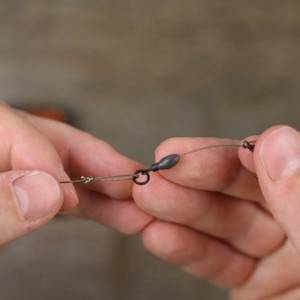
Step #6 - This is what the rig looks like in the water. Notice the loop where our rigid section can move freely. This equipment will lie on the mud, and the boilie will be raised above the bottom. This way, you can be sure that the presentation is not spoiled in any way.
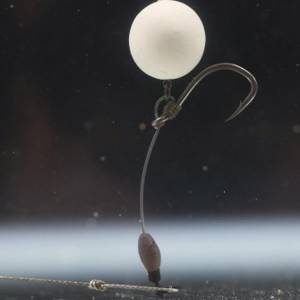
Full or partial copying without the consent of the portal editors is prohibited
Stoppers for boilies
To securely attach boilies to a cord or hair, special boilie stoppers are often used. There are various types of stoppers on sale, but despite their appearance, stoppers are designed to stop a boilie on a cord. The photo below shows some types of popular stoppers for boilies.
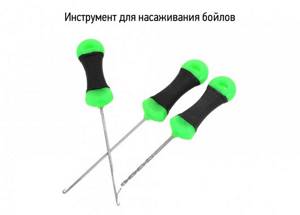
Photos of fishing with boilies
Note!
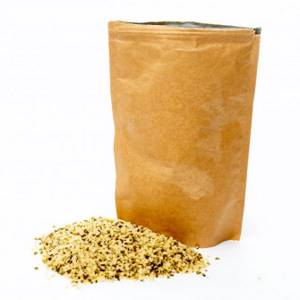
Hemp seeds - tips on using and preparing seeds for fishing (120 photos)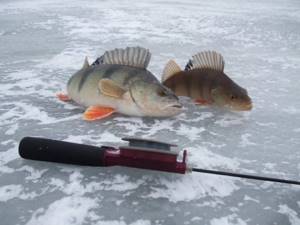
Bloodworms for fishing - secrets and tricks on how to properly obtain, store and attach for catching various types of fish (125 photos + video)
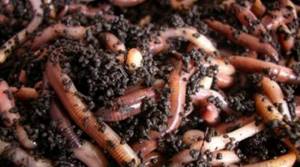
Dung worm - methods of extraction and secrets of catching. How to properly prepare and breed at home (100 photos and videos)
Read here Flavors for fishing: practical advice on choosing and recommendations on how to make it yourself (125 photos and videos)
Help the project, share on social networks 

1+
Advantages and disadvantages of boilies
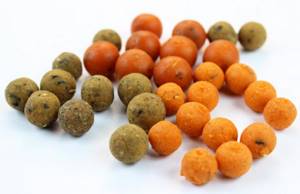
First, let's look at the advantages of boilies for fishing:
- Large and large bait allows you to get a good catch in places where there are a lot of white fish.
- The average weight of fish caught is increasing.
- These are the most concentrated baits.
- Branded boilies contain laxatives, as a result the fish cannot get enough and feel hungry.
- A large bait may arouse suspicion in a cautious fish, and it will avoid the attractive ball.
Boilies also have disadvantages:
- When cooking large balls, it is not always possible to cook all the ingredients evenly. And with longer cooking, the lumps of dough begin to disintegrate.
- Sometimes the crust that forms during drying does not allow attractants to penetrate into the water. The situation can be corrected by punctures on the surface.
- When using large granules, it is quite difficult to make long casts.
- A large number of manufacturers has led to the fact that it is possible to purchase low-quality goods at a high price.
- High price.
Cooking boilies
Boilies of your own production are profitable, since you can make a large amount of bait from cheap ingredients, and if there is a surplus, you can make groundbait.
Cooking steps
Regardless of the components used to prepare boilies, the process will be similar:
- Initially, mix all dry ingredients into a homogeneous mass.
- After this, mix eggs, dyes, and flavoring in another container.
- Then put everything into one container and mix.
- Knead the dough. It should be viscous; to achieve this, adjust the amount of liquid.
- Make several cylindrical “sausages”. Selecting their diameter to match the size of the future boilie. Next, cut them into cubes and make spherical lumps.
- After all the balls are rolled, they are boiled or placed in the microwave.
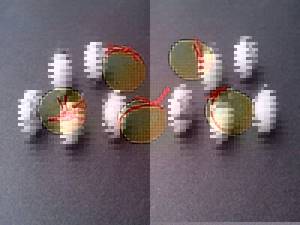
Recipes
There are many recipes for making boilies, but there are only 3 that are most effective for their season:
Spring:
- 25% fish, 25% corn and 25% wheat flour.
- 25% bird food.
- 10 pieces. chicken eggs and 25 ml of fish oil per 1 kg of dough.
Summer:
- 30% wheat and 10% rice flour.
- 10% bird food.
- 20% soluble fish protein.
- 10% each of bran and casein.
- 5% each of salt and sprouted wheat.
Autumn:
- 20% fish and 5% semolina and corn flour.
- 30% crushed macadamia.
- 10% each of ground sunflower seeds and salt.
- 20% sugar.
- 10 pieces. chicken eggs per 1 kg of dough.
How to prepare floating and sinking boilies?
Floating:
Floating balls are not boiled, but dried in the microwave. It is necessary to ensure that the crust is slightly baked and not burnt. To do this, it should be every 20-30 s. check them. After the crust has formed, you should put the boilies in a container with water and when lowering it to the bottom, it should gradually rise to the surface.
Making sinking boilies:
They must be boiled in water for 1-3 minutes, stirring constantly. The more boilies are cooked, the harder they will be.
Boilies for carp
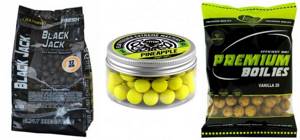
Carp prefers large-sized balls; boilies with a diameter of 14 to 18 mm are allowed. Also, a large bait does not give small fish even the slightest chance of getting hooked.
The predominant colors should be red, purple, white and yellow. Carp is partial to the aromas of honey, strawberries, corn, and tutti-frutti. Sometimes there is a successful bite on boilies with the aroma of cinnamon or red ground pepper. Dips from companies such as Richworth and Mistral have also proven themselves well.
The following baits are used to catch carp:
- Black Jack;
- Pop-Up;
- Premium.
There are not only bait, but also bait, as well as dusting options.
Features of using boilies
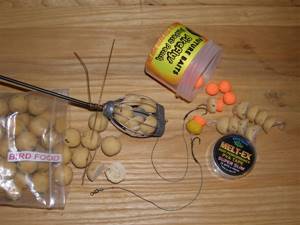
Boilies are popular. This is a budget-friendly, simple and effective bait. The main feature of their use is that in reservoirs where fishermen often use them, the fish get used to a certain shape and size of the bait, refusing to bite. Therefore, it is more expedient to give the boilie a round shape, a square or rectangle shape, thereby misleading the object of our fishing.
It is possible to combine two different boilies by connecting:
- halves with the same composition, but different flavors;
- attachment boilie with floating boilie;
- parts with different nutrients and flavors.
Boilies for crucian carp
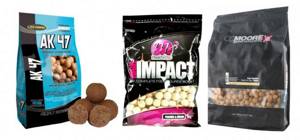
To catch this fish, floating balls ranging in size from 6 to 8 mm are most often used. You can also use neutral ones. Since crucian carp lives in muddy reservoirs, you should give preference to products of red, yellow or orange color. Crucian carp prefers the aroma of dill, garlic, scopex, strawberries and tutti-frutti.
Crucian carp is considered to have a sweet tooth, so sweet flavors and powdered sugar can be included in the composition. This is especially true during the period when the water temperature rises to 20 °C and above.
Among store-bought boilies for crucian carp, the products of the following companies give the best results.
{banner_vnutri-kontenta-3}
FunFishing
The products provided by the brand have a wide selection of flavors, including fish, shellfish, and larvae. Such boilies are best used in the autumn, when the fish are fattening.
Mailine
The manufacturer offers a large selection of boilies of different sizes. The company's products are also known for their large number of aromas that are attractive not only to crucian carp, but also to other fish.
CC More
This is an English company that has chosen bottom fishing as its specialization. Among the products there are interesting options for connecting a hook with a boilie using various rubber bands, glue or tubes.
Boilies for carp
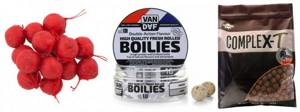
This type of fish is distinguished by its intelligence, suspicion and caution. The carp also has excellent eyesight. It is also worth considering that when fishing, the fish exhibits strong resistance.
When choosing flavorings, you should not choose bright aromas, as this may scare off a cautious member of the carp family. If the water temperature is not very high, fruit aromas are not used, as they will not give a positive result. You can also add raw liver to your homemade boilie.
The consistency of the ball should be such that it dissolves in water a quarter of an hour after casting. If the boilie has been stored for a very long time, then the top crust is trimmed a little.
It is also worth adding pieces of boilies to the bait mixture so that the carp gets used to the taste a little.
Most often used for carp
boilies from the following companies:
- Master Carp;
- Van Daf;
- Dynamite Baits.
Among all the aromas, the fish prefers nuts, anise, vanilla, plum, scolex, and sea cocktail.
Boilies for bream
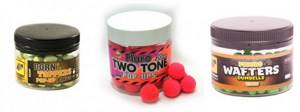
In spring it is worth using small nozzles, and in summer and autumn it is allowed to use balls with a diameter of up to 15 mm. In the summer, you should give preference to the aromas of hemp seeds or strawberries. In autumn or spring, it is better to choose the smell of earthworms.
If the water is stagnant, then you should use red or yellow balls, the size of which does not exceed 1 cm.
For bream it is better to use floating boilies. Before you start fishing, the bream is fed. You can use feeders.
You can include sugar and ground sunflower seeds in your homemade boilie. It is also better to use egg powder instead of eggs.
Types of the most popular
boilies for bream:
- Corn Toppers;
- Two-Tone;
- Fluoro Wafters.
All of these attachments are floating. There is a large selection of scents, sizes and colors. Bream prefers such tastes as corn, honey, strawberry, banana, melon and others.
What is better - buy a boilie or cook it yourself?
The fishing departments have a large selection of boilies of various sizes and flavors. These types of bait are affordable, so if you don’t want to bother with homemade preparations, you can purchase different types of bait immediately before fishing.
To prepare bait at home, you need to follow the following process:
- make a dry mixture for bait;
- choose a flavor enhancer and add it to the bait;
- make the dough and wrap it in a plastic bag and leave it for several hours;
- form balls and boil them in boiling water for 5 minutes;
- dry the bait.
This process can take a long time, especially if the fisherman wants to make several types, so in this case it is better to purchase a finished product.
Boilies for catfish
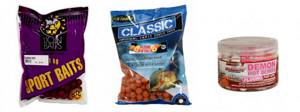
Catfishing begins when the water warms up by more than 10 °C. During this period, the catfish begins to hunt not only at night, but also during the day. Over time, the catfish switches to its usual mode and hunts mainly at night. The predator feeds on mollusks, birds, snails, and leeches. He is also attracted by the aromas of squid, mussels, and other sea inhabitants.
Catching catfish with boilies is possible in shallow reservoirs with clean water and a large number of bottom fish. It is very important to let the catfish get used to the bait. For this purpose bait is used. For this purpose, it is best to use seafood or pieces of dead fish. You can also feed them with earthworms.
Boilies for catfish should contain the following components:
- fish oil;
- garlic (a little);
- liver;
- blood of birds or animals (can be replaced with bleeding meat).
When making it yourself, it is worth making large balls, several millimeters larger than those for carp. Place several pieces at a time on braided hair.
The most popular boilies for catching catfish:
- Paka (Black, White, Red);
- Dynamite Baits;
- Lion Baits SPORT;
- Fun Fishing;
- Starbaits.
You can use both sinking and floating baits. Catfish prefers the aroma of fish, sea cocktail, chocolate, vanilla, anise and other aromas. Often the composition contains dry blood, which attracts predators. For catfish, red, orange or brown balls are used.
Specifics of fishing
Anglers who are just starting to master carp fishing do not always have an idea of what boilies are and what the operating principle of this attachment is. A boilie is a solid round or cylindrical bait, consisting of various components and having a specific smell that attracts fish to the fishing area. Unlike traditional baits, which are attached directly to the hook, this bait is attached to the rig using a “hair” rig.
Important! Carp can be caught quite successfully using traditional soft baits, but in this case there is a high probability that the fish will swallow the bait deeply and removing the hook will lead to its death.
Fans of carp fishing fish exclusively on the “catch and release” principle, so the use of boilies for this type of fishing is completely justified. When fishing with hard bait, the carp is caught at the very edge of the lip and is practically not injured during fishing and removing the hook.
The nature of the fish biting on boilies is significantly different from what is observed when fishing on a worm or dough. If, when fishing with a worm, a carp tries to spit out the hook only when it feels the resistance of the equipment and the bait is already deep in the throat, then when fishing with a boilie, the fish recognizes the catch much earlier. Swimming up to the bait and opening its mouth, the fish creates a directed flow of water and sucks in the boilie along with the hook. Having sensed a foreign metal object in its mouth, the carp immediately tries to spit it out, while the voluminous nozzle is the first to fly out of the fish’s mouth, and the hook sticks into its lower lip.

To make boilies more attractive, they can be treated with liquid flavoring.
When fishing on a hard bait, the angler does not need to hook. In most cases, the fish is securely hooked and the fisherman can only pull it ashore.
DIY boilies
Do-it-yourself boilies have a lot of advantages. Usually the fisherman knows which bait is in demand among the fish of a particular region. This is the most important reason why homemade baits are more effective.
For production, one part of bird feed and one part of semolina or corn flour are used (finely ground cereal can also be used). The entire mixture should be ground in a coffee grinder. This mixture makes up 45% of the total dough. It is also necessary to add soy flour (45%) and fish or bone meal (5%). Per kilogram of dry mixture, give 10 drops of oil (sunflower or flax seed), and 5 teaspoons of a mixture of ground cinnamon, cumin and chopped (or dry) garlic. To add viscosity, add 1 raw chicken egg per 100 g of the mixture. You can add different food colors.
Form smooth balls from the thoroughly kneaded dough. They are dipped into boiling water and removed with a slotted spoon immediately after they float to the surface. The finished boilies are laid out separately and dried for several days.
The catchability depends on the consistency and taste of the boilies. It is very important to maintain balance. Various spices and seafood also work well. You can also include nut flour in the composition. Fiber or starch can be included to increase viscosity.
Food stimulants have proven themselves very well. These are dry substances that give the bait the taste of fish, sweets, fruits, and meat. You should not give more than 50 g of spices or 100 g of stimulants per 1 kg of mixture.
Recently, oils such as dill, peanut, anise or hemp are increasingly used to prepare bait. The optimal concentration is achieved experimentally. You can add a few drops of the substance to the dough, or dip the bait in oil before use.
Artificial flavorings can have an unpleasant bitter or acrid taste and may repel fish. For this reason, you should not exceed the concentration of the active substance.
Recipe for bait with cake
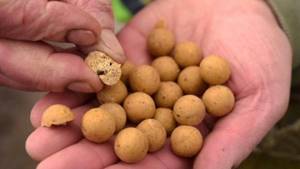
Compound:
- 150 g wheat flour:
- 2 raw eggs;
- 50 g sunflower seed cake.
Knead the dough into a tight dough, roll it into a thin sausage and cut into even pieces. Shape each piece into a ball and cook in boiling water.
How to catch carp with boilies
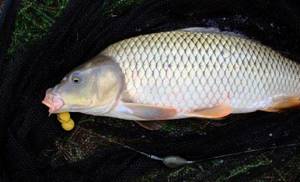
For successful fishing sessions, they look for flat bottom plateaus and carry out the initial intensive feeding of the fishing point, feeding a small diameter bait as bait. They fish with larger baits that stand out from the rest of the bait table. Depending on the activity of the fish, complementary feeding and baiting of the trophy can be carried out over several days. Given this situation, the angler must plan long-term strategies for carp trips in advance. After feeding and installing the equipment, all that remains is to wait for the bite signal, which is characterized by intensity and consistency, at which the angler should immediately hook the fish and carry out the landing.
Carp bites are sharp, ending with a self-notching trophy. Fishing is difficult, requiring pumping out fish with a reel with a properly adjusted friction brake. Fighting especially large specimens will require not only a significant amount of time, which sometimes lasts several tens of minutes, but also considerable physical effort from the fisherman.

